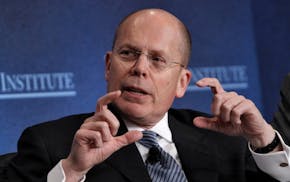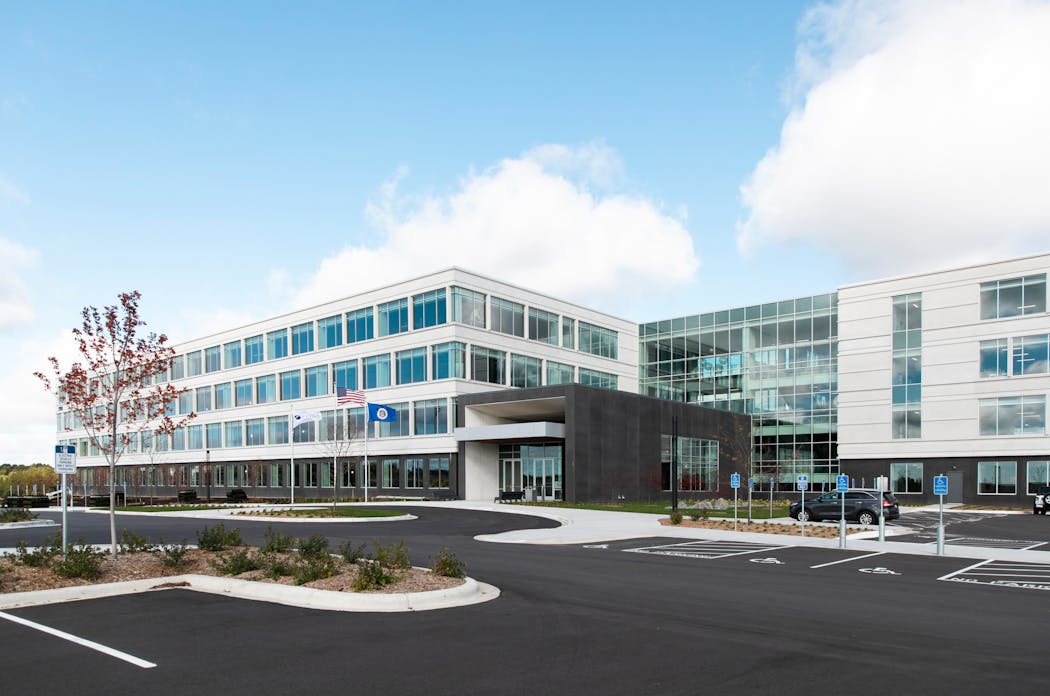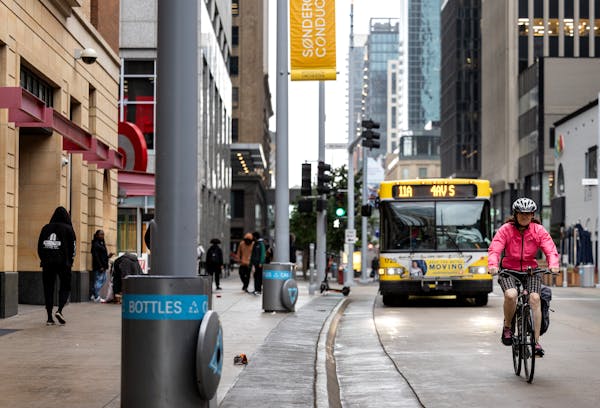Bumper-to-bumper rush hour traffic and long lunchtime lines at some eateries are encouraging signs for owners of Twin Cities area office buildings.
New data, however, isn't as promising. Although more workers are steadily returning to their cubicles and the local economy is humming along, office vacancies have risen to an all-time high. By the end of last month, more than 22 million square feet — or nearly 14% of all the office space across the metro — was vacant, according to a third quarter report from Colliers.
While that figure includes office space companies have already vacated before the expiration of their lease, it doesn't include occupied space that's available for rent, should a new tenant step forward. This practice, known in the industry as subleasing, could cause another bump in for-lease signs as more companies look to shrink their space.
"The full implications of this will play out over time," said Tom Leighton, an associate with Stantec. "As those leases expire, you'll see this musical chairs effect as companies look for a downsizing opportunity but also an increase in quality as they make that move."
That's putting Twin Cities area companies in the driver's seat as they skinny up their offices and seek resort-style amenities to woo workers back in person.
"We had more options than we would have if we had started [shopping for a new space] five or six years ago," said Alan Weinberg, vice president of marketing and product management for IMRIS, which makes MRI machines. "There were far more opportunities for us to explore."
Downsizing space
For several years, IMRIS operated in a sprawling, five-story brick office building built in the mid-1970s. Situated near a sandy beach on Shady Oak Lake in Minnetonka, the building was once the home of Rollerblade and K-Tel, famous for the Veg-O-Matic. But the building had more space than IMRIS needed and wasn't well-suited to the company's research and high-tech production needs.
After its hunt for a new global headquarters, IMRIS moved earlier this year into a newly built facility in Chaska that includes offices and production space. That move left behind another massive office space in Minnetonka, one of several suburbs where empty older spaces are mounting.
"We now have less square footage but have everyone occupying it in a way that's more efficient," Weinberg said.
Despite a 9% annual increase in the vacancy rate, the situation in the Twin Cities area isn't as stark as in many other metro areas. Nationwide, the average vacancy rate is just shy of 17%.
In the Twin Cities area, vacancies are lowest in the outlying suburbs but highest along the I-494 corridor and in the Central Business District (CBD) in downtown Minneapolis, where large companies are consolidating their workforce and moving into smaller spaces.
That downsizing has caused a bumper crop of new leases and subleases, but in recent months there's been a spate of much larger ones, according to Colliers.
One of the largest happened recently after Thomson Reuters swapped a 263-acre campus in Eagan for 300,00 square feet in part of a different Eagan building that Prime Therapeutics recently built.
That move put Thomson Reuters' former headquarters on the market, contributing to a steep, more than two-percentage-point increase in the vacancy rate across the metro.
In Plymouth, Prudential Financial pursued a similar strategy, selling its headquarters to a developer — who plans to tear it down — and moving into a 28,000-square-foot space on the eighth floor of the Dayton's Project in downtown Minneapolis. The company shuttered its 75-acre campus, which once housed about 800 workers. There will be a roughly $300 million, mixed-use redevelopment project breaking ground there in the coming months.
In Minneapolis, NetSpi signed a lease for 60,000 square feet of space on two of three floors in the Steelman Exchange building in the North Loop neighborhood of Minneapolis. That's only after another company vacated that space at the end of last year and consolidated onto one floor.
With these kinds of moves, the newest and best offices — Class A spaces — continue to post higher asking rates while rents on less-desirable buildings might be plateauing, according to the Colliers report.
"I've heard people recently say we're at a bottom, which is encouraging because I haven't yet heard people try to forecast a bottom," said Jeremy Jacobs, executive vice president of Colliers' Minneapolis office. "But right now, it's a little tough."
Upgrading amenities
With vacancies increasing in the Twin Cities, Jacobs said there's now a significant disparity between asking rents and what tenants end up paying. He said lease deals this summer are closing for 5-15% below asking, depending on the building and the submarket. He said building owners who are watching values decline are often asked to make significant improvements to attract tenants.
Brent Robertson is managing director for the Minneapolis office of JLL, which handles leasing at some of the highest-profile office buildings in the Twin Cities including IDS Center, RBC Gateway Tower and North Loop Green, a 14-story office tower currently under construction.
He said North Loop Green is months from completion and is already 64% leased. Some tenants, including ESG Architects, which designed the project, are moving from other parts of the CBD, where workers have returned to about 65% of the buildings, according to a recent Minneapolis Downtown Council survey.
He said tenants are downsizing for financial reasons but also to draw workers back to the office. And that means many are willing to pay more for smaller but higher-quality space and amenities.
"Tenants are now leading with strategy, not cost," Robertson said, noting high-profile buildings, including IDS Center, continue to attract law firms, financial services companies and others.
Jacobs said while there's still plenty of turbulence ahead for building owners, he is confident the office market will evolve despite so many headwinds.
"What I still don't hear is a long-term pessimistic view. It may never be what it was, but I've never heard anyone say the office market is going to crater," he said. "Most of us believe that while the recovery might be prolonged, there will be a recovery that gets us back to some semblance of normal."

UnitedHealth shareholders give tepid support to $60M in stock-based pay for new CEO
Target recalls more employee groups to downtown Minneapolis headquarters

Ronzoni pasta-maker coming to Lakeville in $880 million Post acquisition

$200M acquisition by Minneapolis company will help it aid other firms make deals



